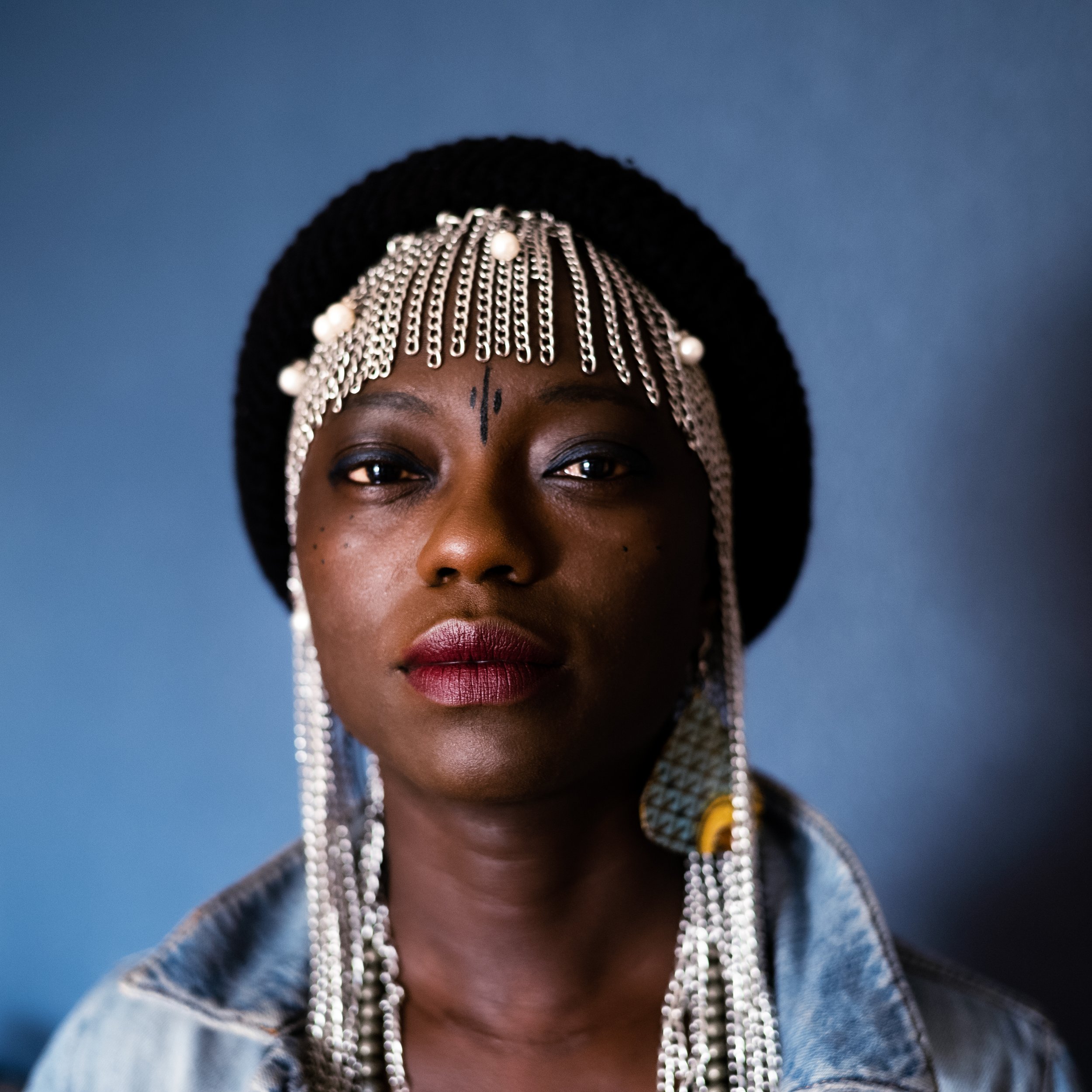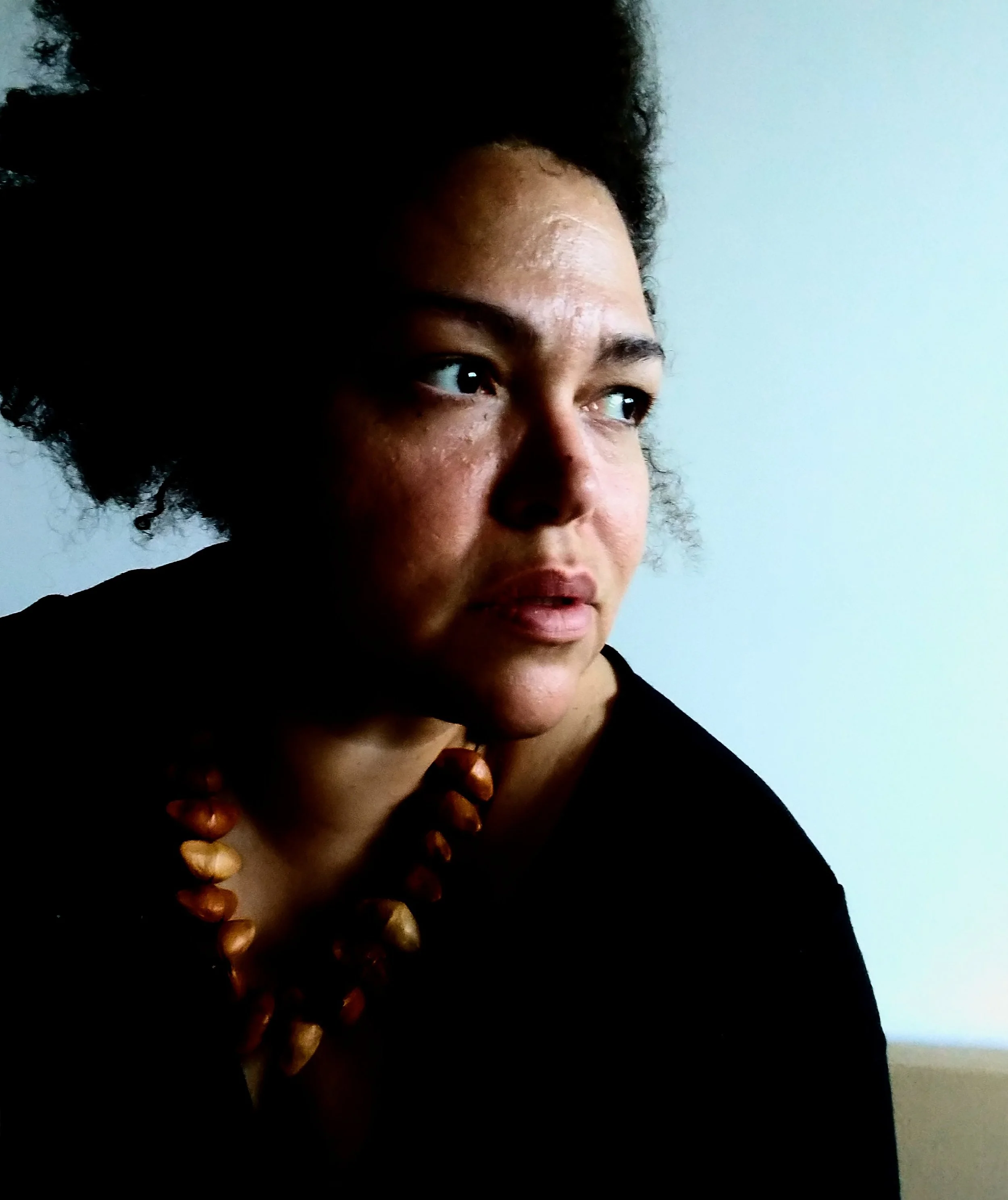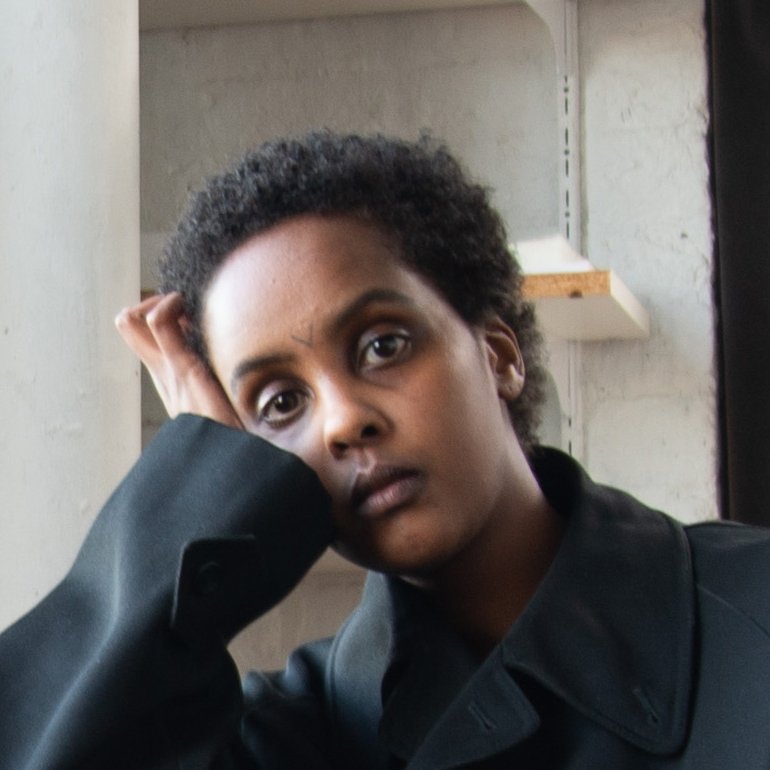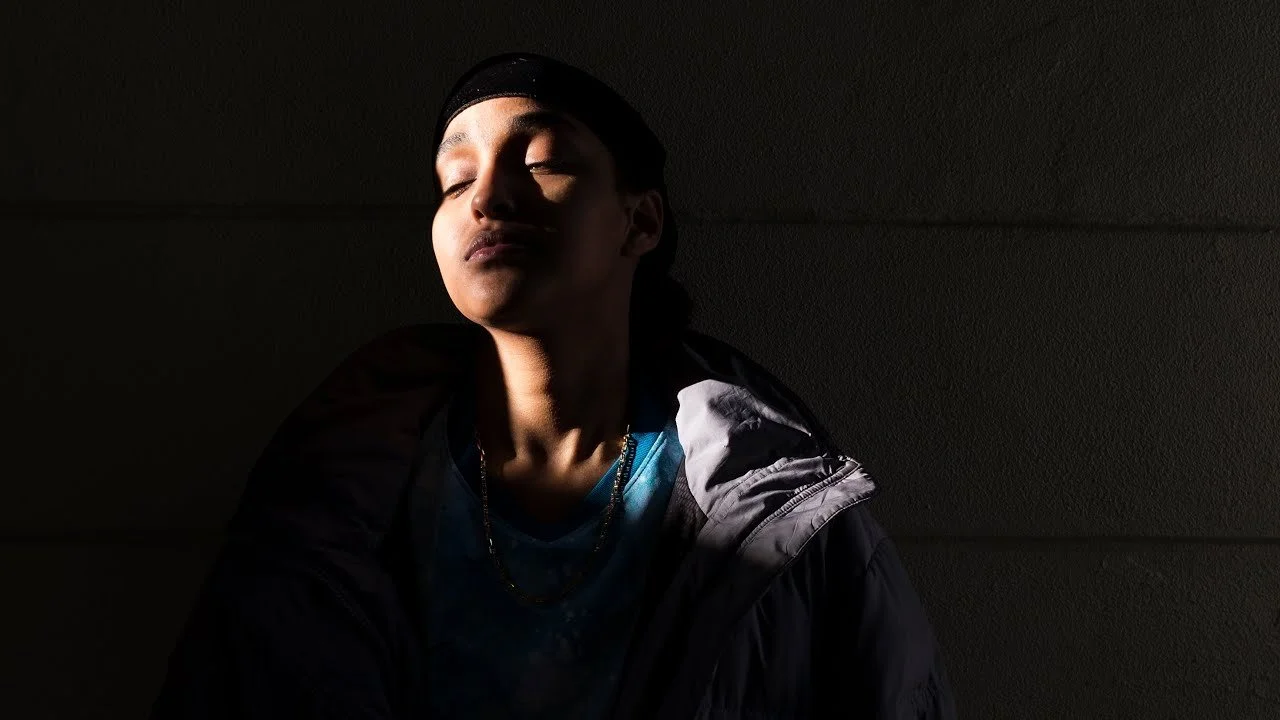SOUTHNORD X KULTURHUSET
SOUTHNORD X KULTURHUSET
“The threshold is a prism, refracting the single narrative into a dazzling spectrum of multitudes”
Image: Only the fool fights the sun, Rafiki
Southnord x Kulturhuset welcomes you to join us for the inaugural Southnord Artfest, a triennial in the making. This edition, hosted by Kulturhuset in Stockholm brings together some of the Nordics’ foremost contemporary artists, some hidden gems and legendary forerunners. Their common denominator is their African heritage and their Nordic context, which they use to examine what it means to be a complex and multifaceted human being. The artfest takes place between 26 October 2023 and 14 January 2024.
THE THRESHOLD IS A PRISM
The core of the art festival is the exhibition The Threshold is a Prism in Gallery 3. The exhibition – which is curated by Marcia Harvey Isaksson – mixes painting, sculpture, photography, video works and sound works by 20 artists from Denmark, Finland, Iceland, Norway and Sweden. The exhibition opens on October 26, 2023.
The artists find themselves on the threshold between two cultures and, with that starting point, can transform the simple into a crackling spectrum of nuanced stories. “The works carry stories that are often not told. The silenced and the voiceless get a voice while the common historiography is completed”, says Marcia Harvey Isaksson.
Join us for the grand opening on Thursday 26 October 2023, at Kulturhuset Sergels torg, from 17:00-19:30.
THREE THEMATIC WEEKENDS
In addition to the exhibition, Southnord Artfest presents a rich program designed for all ages, spread over three thematic weekends dubbed Sharing, Digging and Caring.
October 26-29: Sharing - sharing knowledge, experiences, stories, and more. It kicks off with a powerful performance by Diana Agunbiade-Kolawole. Enjoy visual poetry evenings, storytimes for children, workshops for young artists, film screenings, and engaging talks. Find out more…
November 23-26: Digging - exploring archives - from personal stories to historical narratives. Join us for film screenings and discussions, deep listening sessions, and interactive projects that aim to rediscover erased histories.
January 11-14: Caring - for oneself, for each other, for nature. Engage with short film screenings, performance art, workshops, artist talks, and more as we explore alternative ways of caring for our spiritual and mental health.
Exhibiting Artists
-
Ahmed Umar (b. 1988, Sudan) is an interdisciplinary artist who lives and works in Oslo. He received his MFA degree in medium- and material- based art from Oslo National Academy of the Arts in 2016. Ahmed's art highlights questions regarding identity, religion and cultural values through different modes of artistic expression. He uses personal experiences as tools to convey narratives not only about suppression and alienation, but also of liberation and owning one's own history. His works have been exhibited at a number of institutions in Norway and abroad.
Photo credit: Ahmed Umar
-
Ami Weickaane (b. 1978, Senegal), also known as Bluu, moved to Paris as a young adult and now divides her time between France, Senegal and Sweden. She sees her practice as a process of sowing seeds, where she uses images and sounds to create mixed media installations. She questions our modern times, speculates about the "future present" and reflects on the traces we leave behind. Ami's view is that we are the ancestors of the future and therefore she wants to tell stories that are substantial, inspired by heritage, identity and Africa. The core of her work is the woman and above all the black woman.
Photo credit: Sandro Miller
-
Cecilia Germain (b. 1974, Sweden) is a Swedish-Canadian artist living in Uppsala since 2018. After her studies at the Department of Art at Konstfack in Stockholm, 2000-2006, Germain has worked on themes that often deal with colonial structures, historiography, memory work, grief processes, pathways to healing and decolonisation, black public health and social justice. Painting, photography, text, graphics and performance are recurring mediums of expression the artist uses, but she also works with olfactory botanical materials and with certain botany as a growing archive and a way into stories, knowledge, history and hope for the future.
Photo credit: Cecilia Germain
-
Diana Agunbiade-Kolawole (b. 1988, Nigeria) works with lens and non-lens based photography presented as installations, performance and prints. At the core of her practice is an investigation of material processes that explore new forms within the framework of established techniques. Agunbiade-Kolawole has exhibited widely in Sweden and internationally. Her work is represented in the the collections of Moderna Museet, Stockholm; Göteborg konstmusset, Stockholm Läns Landsting, Uppsala Läns Landsting, & Brucebo Foundation in Sweden; National Health Services, Barking & Dagenham Council, Kingston.
Photo credit: Suranjan Wanninayaka
-
Dina El Kaisy Friemuth (b. 1988, Germany) is a German-Egyptian artist, living and working in Berlin and Copenhagen. In their practice, Dina’s practice questions gender, ethnicity and class and aims to create environments that put marginalised voices centre stage. Their activist practice often emerges in collaboration with other cultural practitioners and includes curatorial projects, text, performance and video works. They questions how community and belonging are negotiated through the sharing of stories – and from which point these narratives start. Dina has exhibited at, among others, the 11th Berlin Biennale, Bergen Konsthall and 55-11 Gallery in New York, and has initiated and been a member of several artist groups and networks such as Feminist Collective With No Name, The Cultural Workers Union for People of Color (Denmark), Another Dinner Ruined (Beirut) and Speculative Bitches (Berlin).
Photo credit: Xuân Nguyen
-
Dyami Rafn Andrews (b. 1996, USA) is an African-American-Icelandic artist based between California and Iceland. Through simple and deliberate compositions his work captures the stark, sublime beauty of the Icelandic landscape. Using two-field arrangement and processes inspired by geological formation he creates works which vacillate between landscape & texture field. Informed by his biracial heritage and bicultural upbringing, his works provide a perspective on the climate crisis. Captivating and at times unsettling, Dyami's work compels viewers to confront the environmental impact of human actions and consider their role in preserving our world.
Photo credit: ethree
-
Ernest Mancoba (b. 1904, South Africa – d. 2002, France) was an avant-garde artist who spent most of his life in Europe. He co-founded the CoBrA movement in Denmark, where he lived for five years. Mancoba then moved back to France where between 1968-1970 he painted the oil painting The Ancestor. This work was interpreted in 2016 in a monumental tapestry by the artist Joseph Ndlovu (b. 1953 – d. 2019, South Africa) and is now part of the Constitution Court Art Collection in South Africa. Ndlovu received his art education at Rorke's Drift, an art and craft school founded in 1962 in South Africa by two Swedes, Ulla and Peder Gowenius, then newly graduated students from Konstack.
Photo credit: TJ Newton
-
Fatima Moallim (b. 1992, Russia). She is a self-taught artist who lives and works in Stockholm, Sweden. The foundation of her work lies in drawing where Moallim express the energy directly via her senses to the canvas or paper through the tip of the pen. Moallim has exhibited site-specific works at Moderna Museet Stockholm, Göteborgs konsthall, Marabouparken, Zinkensdamm metro station in Stockholm and on the glass facade of Bonniers konsthall. She is represented in the collection of Moderna Museet and is the 2022 Iaspis Studio Grant Holder ISCP, New York.
Photo credit: Joakim Forsgren
-
Germain Ngoma (b. 1953, Zimbabwe) was raised in Zambia where he worked as a metal artist in the early 1980’s until he left to study art in Oslo. Germain has widely shown his experimental sculpture practice and recently started to exhibit the results of his life long passion for photography which he uses as an observational tool. His contribution to the Norwegian art scene goes far beyond his solo practice. His skills in sculptural processes, with a specialisation in metal are renowned within Norway. He collaborates on many levels; from total artist involvement and collaboration to being a master craftsman producing objects for other artists.
Photo credit: Christina Leithe Hansen
-
Guro Jabulisile Sibeko (b. 1975, Norway) is a Azanian-Norwegian teacher, author, spoken word artist and political activist. She has fought racism, homophobia and misogyny through art, public fury, and various organizations for three decades.
Photo credit: Siv Dolmen
-
Ina Nian (b. 1992, Sweden) is a conceptual artist, based in Malmö and with roots in Gambia. They have created a method called Black Noise which lets them explore another side of the art world, the one that is often erased but not imperceptible, depending on which frequency you’re able to perceive. They use Black Noise as a guideline in their research process which involves critical theory, history and archive material, and their current research driven and site specific focus on Sweden’s colonial iron trade history during the transatlantic slave trade is an on going long term project.
Photo credit: Andrea Lillieroth
-
Ismaila Fatty (b. 1957, Gambia) is a textile artist based in Sweden since 1988. His work bears strong reference to Gambian textile traditions and he often uses tie-dye techniques to manipulate and colour textiles, creating three-dimensional objects from hand-dyed cotton and silk fabrics. Some works appear to be shields; while others depict human forms holding hands, or praying. He has been exhibited at institutions such as Kulturhuset in Stockholm and participated in the Dakar Biennale in 2014.
Photo credit: Mattias Lindbäck
-
Jeannette Ehlers (b. 1973, Denmark) is a Copenhagen-based artist of Danish and Trinidadian descent whose practice takes shape experimentally across photography, video, installation, sculpture and performance. She graduated from The Royal Danish Academy of Fine Arts in 2006. Ehlers’ work often brings about decolonial hauntings and disruptions and she insists on the possibility for empowerment and healing in her art, honouring legacies of resistance in the African diaspora. She merges the historical, the collective and the rebellious with the familial, the bodily and the poetic.
Photo credit: Roar Studio Milano
-
Khalid Shatta (b. 1990, Sudan) is a is a Sudanese artist who lives and works in Oslo. In his work, Shatta explores the migration of the soul – the feeling of being out of place. He uses ancient Kemetic and Cushitic symbols from the historical kingdoms of the Nile Valley civilizations in his painting. Shatta has exhibited at, among others, Kunsthall Oslo.
Photo credit: Kunsthall Oslo
-
Michelle Eistrup (b. 1969, Denmark) makes art that incorporates themes of identity, corporeality, faith, memory and post-colonialism, with her transnational background (Danish, Jamaican, American) frequently serving as a point of departure. She traverses varied artistic expressions that include photography, drawing, video, sound and performance, all integrated into a practice led by the spirit and a strong belief in the transformative potential of collectivity. Rooted deeply in a vibrant global arts community, she has exhibited internationally and organised events facilitating in-depth dialogue and between artists, writers and curators to encourage a more integrated, sensitive and equitable creative exchange.
Photo credit: Michelle Eistrup
-
Ugbad Mustafa Yusuf Noor (b. 2001, Norway), known by the stage name Musti, is a Norwegian rapper and singer. She was named Newcomer of the Year during P3 Gold 2020 for her debut album Qoyskayga (Somali for "my family") and the EP Mellom høyblokkene released in the same year. She won two prizes during the Spellemannprisen 2020: in the hiphop category for the album Qoyskayga and in the year's breakthrough category awarded by Gramostipend. In addition, she was nominated in 2020’s lyricist category for Qoyskayga. Musti was also nominated for the Spellemannprisen 2022 in the hiphop category for her second album, Ugbad. Her lyrics mainly revolve around her identity and about growing up in a Norwegian-Somali family on Tøyen, in Somaliland and in Milton Keynes outside London.
Photo credit: Munch Museet
-
Rafiki (b. 1989, DRC), is a Norwegian-based Congolese artist whose interdisciplinary artworks move between photography and bead work, textiles and text, and the use of memorial objects old and new. Rather than producing finished products as an end result, Rafiki treats art-making as a practice of remembrance, healing, and cultural analysis. Her images often employ artistic strategies that avert a western anthropological gaze. Incorporating symbolisms, fables, and tools of visual storytelling and oral history, she invokes themes of forced migration and war ghosts, racialized perceptions of Blackness and femininity, and fraught colonial traditions of spatial power and temporal erasure. As a child of the Congolese diaspora with local connections in various countries in Africa and Europe, she taps into pre-colonial forms of global interconnectedness and knowledge transfer. Rafiki is the founder of Oslo-based platform Rafiki Art Initiatives (RAI).
Photo credit: Bjørn Wad
-
Santiago Mostyn (b. 1981, San Francisco) lives and works in Stockholm but has strong ties to Zimbabwe and Trinidad & Tobago where he grew up. His practice foregrounds narrative entanglements in pursuit of new understandings of place, both in a cultural and psychic sense. Mostyn has long been interested in the interplay of music, narrative and the embodied self, with works manifesting as films, exhibitions and curatorial projects. His work explores the dissonance of lives lived between different political spheres. Mostyn builds intuitive stories through layering and collage, mixing new and archival material. Mostyn has exhibited at, among others, Södertälje Art Gallery, Kalmar Art Museum, Hasselblads Center and is represented in the collections of the Moderna Museet, the Statens Konstråd and the Albright-Knox Museum.
Photo credit: Åsa Lundén
-
Sasha Huber (b. 1975, Switzerland) is a Helsinki-based visual artist of Swiss-Haitian heritage. Her work is concerned with the politics of memory and belonging in relation to the colonial residue left in the environment. Connecting history and the present, she uses and responds to archival material within a layered creative practice that encompasses performance-based reparative interventions, video, photography, and collaborations. Sasha also usurps the staple gun, aware of its symbolic significance as a weapon while offering the potential to renegotiate unequal power dynamics (pain-things).
Photo credit: Kai Kuusisto
-
Uwa Iduozee (b. 1987) is a Finnish-Nigerian documentary filmmaker, cinematographer & photographer based in New York City, US and Helsinki, Finland. His practice examines stories that open up new visual representations toward personal and communal identities and the ways that they relate to and are shaped by their environments. Everyday life and personal narratives are the core subjects in Iduozee’s work, opening up into wider discourses around marginalized communities and acceptance within societal and cultural superstructures.
Photo credit: Sandra Itäinen





















